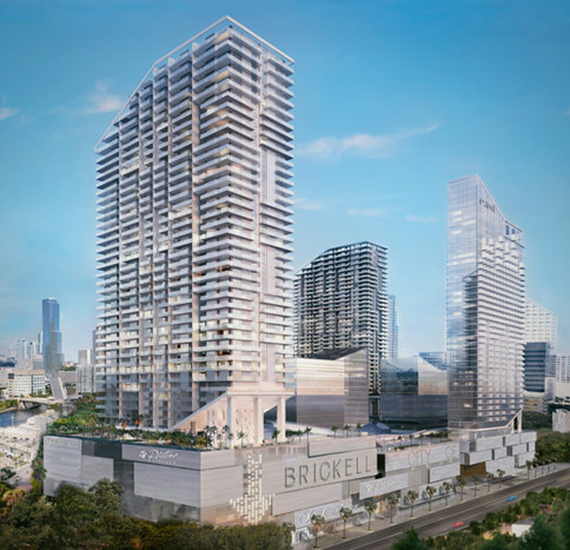Office development is slowing, even as work space vacancy rates continue to drop and rents keep rising, according to top real estate advisors.
As a result, prime office space in downtown Miami is scarce and corporate tenants are looking at alternative properties such as converted warehouses in Wynwood.
“There is very little product on the table,” says Donna Abood, principal for the Miami office of real estate services firm Avison Young. “The return is so much higher on luxury high-rises that’s what developers are going for.”
Office projects currently under construction account for less than 1 percent of total Miami office inventory, according to CBRE’s 2014 fourth quarter Miami office report. “Even with a healthy decline in vacancy, developers have yet to undertake new office construction projects,” the report states. “Multi-family projects are seen as a more attractive opportunity in a market with 50 percent deposit requirements for preconstruction condo sales and strong demand from foreign buyers.”
The few developers that are adding office space are incorporating it into mixed-use projects, the CBRE report said. For instance, Brickell City Centre is opening a new office tower later this year with 85 percent of the building already leased to law firm Akerman LLP. Project developer Swire is also planning a second office building that will be finished in 2016.
Aside from Brickell City Centre, the Panaroma Tower mixed-use residential project at 1101 Brickell Avenue has 50,000 square feet of office space scheduled for completion in 2017.
Abood said those projects will not be enough to meet demand if vacancy rates dip into single digits. Last year, the vacancy rate dropped from 12.4 percent in the first quarter to 11.6 percent in the fourth quarter, according to Avison Young’s 2014 Miami Office Market Overview report.
“We don’t want to get below 10 percent,” she said. “You need a little bit of room for existing companies to grow. If you don’t, you will lose corporate growth to another city, county, or state.”
Tony Cho, CEO and founder of Metro 1, said lack of traditional office buildings in the Central Business District is opening up neighborhoods his firm specializes in such as Wynwood, Little River and Allapattah. “We are seeing a lot more creative users who want alternative space like warehouses they can convert,” he said. “There hasn’t been a lot of new construction, which is keeping supply very tight. But there is opportunity for alternative solutions in the adaptive reuse market.”
However, Don Cartwright, senior vice-president at JLL, said the market has not reached the point of requiring a developer to build a speculative office tower because existing buildings will soon have more vacancies.
The Suntrust International Tower, at One Southeast Third Avenue, will need a new corporate tenant to fill Akerman’s current offices when the firm departs for Brickell City Centre. The same goes for The Miami Center, at 201 South Biscayne Boulevard, when law firm Shutts & Bowen moves across the street to the Southeast Financial Center, at 200 South Biscayne Boulevard.
“As these firms move out, there will still be an adequate supply to attract tenants,” Cartwright explained. “I wouldn’t say we are under-supplied.”
